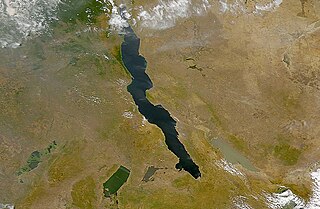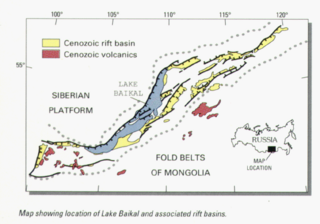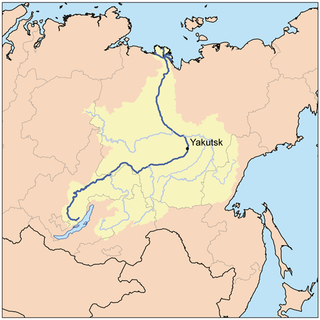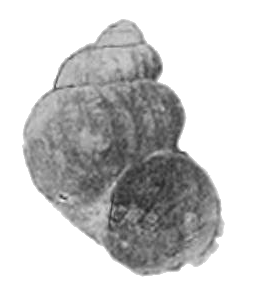
Lake Baikal is a rift lake in Russia. It is situated in southern Siberia, between the federal subjects of Irkutsk Oblast to the northwest and the Republic of Buryatia to the southeast. At 31,722 km2 (12,248 sq mi)—slightly larger than Belgium—Lake Baikal is the world's seventh-largest lake by surface area. However, because it is also the deepest lake, with a maximum depth of 1,642 metres, Lake Baikal is the world's largest freshwater lake by volume, containing 23,615.39 km3 (5,670 cu mi) of water or 22–23% of the world's fresh surface water, more than all of the North American Great Lakes combined. It is also the world's oldest lake at 25–30 million years, and among the clearest.

The Baikal seal, Lake Baikal seal or nerpa, is a species of earless seal endemic to Lake Baikal in Siberia, Russia. Like the Caspian seal, it is related to the Arctic ringed seal. The Baikal seal is one of the smallest true seals and the only exclusively freshwater pinniped species. A subpopulation of inland harbour seals living in the Hudson Bay region of Quebec, Canada,, as well as the Saimaa ringed seal and the Ladoga seal, are also found in fresh water, but these seals are part of species that also have marine populations.
The Abyssocottinae are a subfamily of ray-finned fishes in the family Cottidae, the sculpins. They are known commonly as the deep-water sculpins. The entire family is endemic to Lake Baikal in Siberia.

The Lena is a river in the Russian Far East, and is the easternmost of the three great Siberian rivers that flow into the Arctic Ocean. The Lena is the eleventh-longest river in the world, and the longest river entirely within Russia, with a length of 4,294 km (2,668 mi) and a drainage basin of 2,490,000 km2 (960,000 sq mi). Permafrost underlies most of the catchment, 77% of which is continuous.

A rift valley is a linear shaped lowland between several highlands or mountain ranges produced by the action of a geologic rift. Rifts are formed as a result of the pulling apart of the lithosphere due to extensional tectonics. The linear depression may subsequently be further deepened by the forces of erosion. More generally the valley is likely to be filled with sedimentary deposits derived from the rift flanks and the surrounding areas. In many cases rift lakes are formed. One of the best known examples of this process is the East African Rift. On Earth, rifts can occur at all elevations, from the sea floor to plateaus and mountain ranges in continental crust or in oceanic crust. They are often associated with a number of adjoining subsidiary or co-extensive valleys, which are typically considered part of the principal rift valley geologically.

The Selenga or Selenge is a major river in Mongolia and Buryatia, Russia. Originating from its headwater tributaries, the Ider and the Delger mörön, it flows for 992–1,024 kilometres (616–636 mi) before draining into Lake Baikal. The Selenga therefore makes up the most distant headwaters of the Yenisey-Angara river system.

Planaria is a genus of planarians in the family Planariidae.

Transbaikal, Trans-Baikal, Transbaikalia, or Dauria is a mountainous region to the east of or "beyond" (trans-) Lake Baikal in Far Eastern Russia.

Comephorus, known as the golomyankas or Baikal oilfish, are a genus comprising two species of peculiar, sculpin fishes endemic to Lake Baikal in Russia. Comephorus is the only genus in the subfamily Comephorinae. Golomyankas are pelagic fishes and the main food source for the Baikal seal.

The Baikal Rift Zone is a series of continental rifts centered beneath Lake Baikal in southeastern Russia. Current strain in the rifts tends to be extending with some shear movement. A series of basins form along the zone for more than 2,000 kilometres (1,200 mi), creating a rift valley. The rifts form between the Eurasian Plate to the west and the Amur Plate to the east.
The Lake Baikal mountain vole or Olkhon mountain vole is a species of rodent in the family Cricetidae. It is found principally on the Olkhon and Ogoi islands on Lake Baikal, in southern Siberia. While it was originally described as a species, Pavlinov and Rossolimo reassigned it as a subspecies of A. tuvinicus in 1987 before reinstating it as a species in 1998.

Kurbat Afanasyevich Ivanov (Russian: Курбат Афанасьевич Иванов, was a Cossack explorer of Siberia. He was the first Russian to discover Lake Baikal, and to create the first map of the Russian Far East. He also is credited with creation of the early map of Chukotka and Bering Strait, which was the first to show the yet undiscovered Wrangel Island, both Diomede Islands and Alaska.

Aleksei Alekseevich Korotnev was a Russian zoologist.

Dendrocoelidae is a family of freshwater tricladida flatworms that has a holarctic distribution.

Bdellocephala is a genus of freshwater triclad that inhabits different regions of Eurasia.

Choanomphalus amauronius is a species of freshwater air-breathing snail, an aquatic pulmonate gastropod mollusk in the family Planorbidae, the ram's horn snails, or planorbids.

Teratobaikalia macrostoma is a species of a freshwater snail with an operculum, an aquatic gastropod mollusk in the family Amnicolidae.

Archicotylus is a genus of freshwater triclads belonging to the family Dendrocoelidae. It has largely been found in Russia in Lake Baikal.















